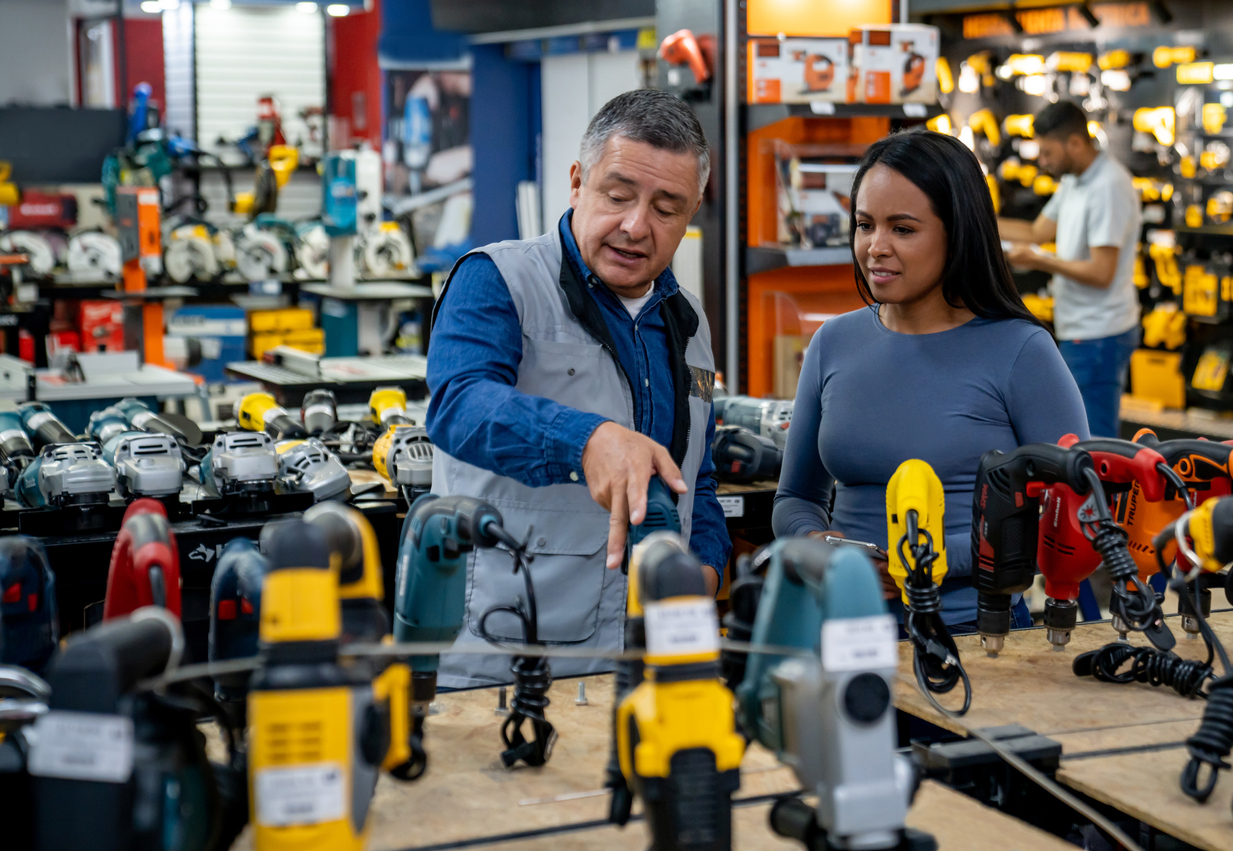We may earn revenue from the products available on this page and participate in affiliate programs. Learn More ›
Many homeowners have renovation projects in mind to turn their outdated abodes into beloved dwellings. A recent survey from Craftsman Tools notes that more than half of Americans won’t put their home on the market due to relatively high interest rates. For this reason, two-thirds of American homeowners are planning DIY projects instead.
Due to a shortage in housing, millennials and younger generations are more likely to purchase older homes that need fixes. However, the desire to bring these projects to the finish line might not be a match for everyone’s ability to see it through. More than 44 percent of homeowners, particularly millennials (63 percent), admit to abandoning a project due to insufficient tools.
Below are the three top tool reasons why millennials (and other age groups) are calling it quits before their renovation projects reach completion:
Reason 1: Cost of Tools

One reason millennials tend to lack the needed tools for renovation projects is financial. The Craftsman survey revealed that 47 percent of millennials do not not own tools due to the required investment. In-house DIY expert Audrey Van de Castle from Craftsman says: “Building up a tool collection is an investment and can take time.”
When buying power tools, she recommends that “Millennials or first-time homeowners consider versatile tools like the CRAFTSMAN V20 system when building their collection.” The brand’s V20 batteries can be used in more than 100 tools.
Reason 2: Limited Knowledge About Required Tools
Insufficient knowledge is another factor that can cause homeowners to abandon DIY home improvement projects. Specifically, the Craftsman survey notes that 36 percent of respondents reported having limited knowledge about the necessary tools. The survey also states that 64 percent of homeowners surveyed prefer to buy tools for renovation projects rather than borrow them.
One solution is to spend more time educating themselves about using specific tools they purchase. Gaining this knowledge may require reading, online searches, seeking mentors, or attending a workshop at a local school in your area.
Reason 3: Concern About Underutilizing Expensive Tools

When it comes to tool usage, 50 percent of survey respondents reported a fear of not using their tools enough. It’s a reasonable concern. If this is the case for you, renting tools may be better value. By renting, you free up funds to invest in materials and other project costs. Instead of sinking capital into tools you may only use a few times, you can reduce your expenses in exchange for a few trips to your local The Home Depot equipment rental desk or another tool rental store.
Tip: Take Your Time
Van de Castle advocates a slow and steady approach. She says, “The best thing about a DIY home remodel is you can usually take your time with them. If you are feeling overwhelmed, you can push your project plan schedule out to allow for more time for yourself to get the right tools for the job and research more detail about the task at hand.”
There may also be financial incentives for renovations, such as tax refunds. Take your time to research this possibility for your particular area before starting your home improvement project.
Tip: Watch Videos

Van de Castle believes that watching YouTube videos can be useful. “As you get access to experts who are going after similar projects and challenges as you, and can help you get your project right the first time.”
She also points out, “YouTube videos could give you wrong advice. It is always a good idea to make sure you look at some indicators on the video such as comments, view count, and the author’s page to let you know if the information is trustworthy.”
Tip: Determine Which Project Types to DIY
For a millennial generation prone to unfinished renovations, it’s worth considering which ones are the best DIY projects versus projects that require hiring out. According to Van de Castle, some projects are easier than others.
She says, “Fixture updates are a lot easier than some people think! As long as there are already existing lines, these can typically be fast projects with the right tools in hand.”
Of course, these types of projects can be hazardous. As Van De Castle mentions, “You should be aware of the safety hazards like electrical shock, and take the proper precautions before beginning these otherwise simple projects.”
Tip: Choose the Easiest DIY Projects

The best DIY renovation projects can be both cost-effective and rewarding if completed. However, as the National Association of Home Builders asserts, more than 30 percent of all their members renovation jobs come from unfinished DIY projects.
Van De Castle provides some solutions, noting, “Paint is one of the easiest and fastest transformations. There are also a ton of simple and easy shelving projects that only require a few tools: saw, clamps, and a drill. Last but not least, installing custom wall accents like shiplap or board and batten can elevate your space all within a weekend.” For more ideas, take a look at the most popular DIY projects.


